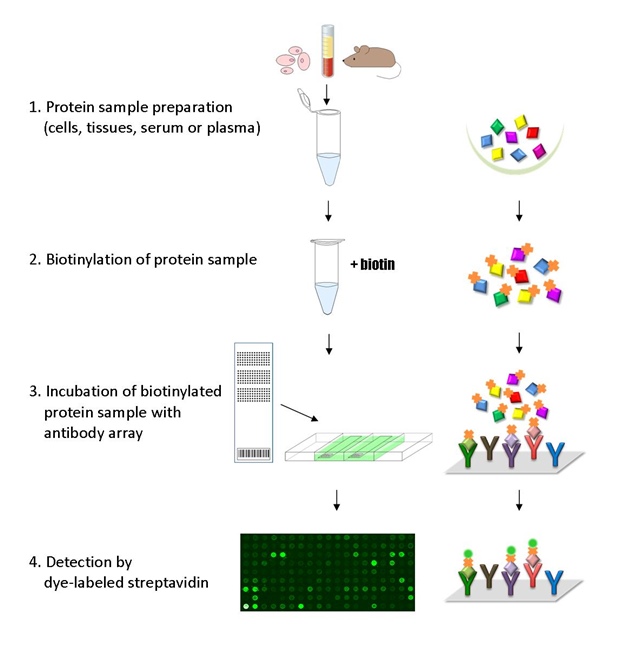Antibody Array is a high-throughput ELISA based platform for efficient protein expression profiling in cells, tissues, serum, or even culture media. Compared to the conventional methods such as Western Blots or traditional ELISA, antibody array assays are much more productive and cost-effective.
Our broad exploratory antibody arrays, including Phospho Explorer Array, Signaling Explorer Array, and Explorer Antibody Array, allow investigators to examine up to 1358 proteins on a single slide. The pathway focused arrays are designed for researchers to study highly relevant proteins in their specific research fields.
We offer a wide range of phospho antibody arrays for protein phosphorylation profiling. The antibodies on our phospho arrays are site-specific and phospho-specific, allowing investigators to study tyrosine, serine, and threonine phosphorylation at specific sites.
Antibodies on our antibody arrays are covalently immobilized on high quality glass surface coated with proprietary 3-D polymer materials to ensure high binding efficiency and specificity. Each array includes well-characterized antibodies, positive controls, and negative controls. Each antibody is printed with two or six replicates to maximize data reliability, .

